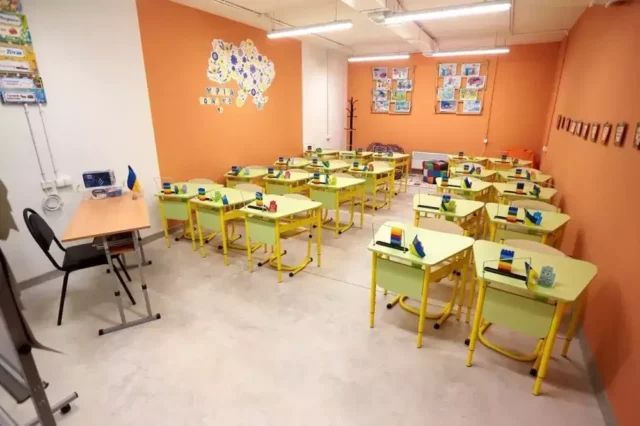Innovative Education: The First Underground School in Kharkiv
In an exciting development for the education sector, Kharkiv is about to launch its first underground school, designed to accommodate up to 450 students at a time. With a shift system in place, this initiative offers the potential to educate a staggering 900 children. This move is particularly critical given the city’s proximity to conflict areas, as expressed by the city’s mayor, Igor Tereshov. Let’s delve into the implications of this groundbreaking decision and the innovative measures being embraced to ensure our children’s education continues unabated.
Why an Underground School?
Opening an underground school may sound unconventional, but it showcases an unwavering commitment to education in the face of adversity. Tereshov emphasized the urgent need for such facilities, noting, «We must provide our children with the opportunity to study, especially in such challenging times.» In regions facing threats from air strikes and other dangers, traditional schooling can pose significant risks. This underground school represents a proactive approach to ensuring that learning continues, even when standard solutions are no longer viable.
What to Expect from the Curriculum
- Flexible Scheduling: The dual shift system allows for maximized usage of space and resources, accommodating more students.
- Safety Measures: The underground environment provides an added layer of protection against potential threats.
- Engaging Learning Modules: Teachers will be utilizing innovative teaching methods that can thrive in a unique setup, ensuring that students remain engaged and motivated.
In practice, this means that young learners will not only be shielded physically but also given the tools to thrive academically. An example of this in action can be found in how some schools worldwide have adapted during crises by utilizing digital tools and flexible learning schedules. The creative incorporation of technology, such as online tutoring and hybrid lessons, ensures that students maintain a continuous learning experience, regardless of their physical surroundings.
The Bigger Picture: Addressing Educational Needs in Crisis
It’s essential to look at the broader context. According to UN reports, more than 70 million children globally have been displaced due to conflict, leading to disrupted education systems. Kharkiv’s initiative is not just a local solution but a part of a larger narrative about safeguarding education in hazardous environments. By launching the underground school, the city sets a precedent, showing that even in the harshest conditions, communities can innovate to protect their children’s right to education.
Moving Forward: The Need for Modern Solutions
While creating underground schools is a commendable step, experts like educational reformers advocate for the introduction of robust air defense systems as a long-term solution. These systems would safeguard not just educational institutions but entire communities, allowing for a more stable environment where children can learn and thrive without fear.
As we look to the future, it’s imperative for stakeholders—including governments, NGOs, and local communities—to collaborate and support these efforts. Investing in education, especially in crisis situations, is not just a box to check; it’s a commitment to nurturing future generations and enabling them to realize their potential.
In conclusion, while the opening of Kharkiv’s underground school is a pioneering response to an urgent need, it is also a call to action for us all. Let us champion the cause of education, advocating for creative solutions and protective measures that empower children to overcome the odds and succeed. After all, every child’s right to learn should never be compromised.






